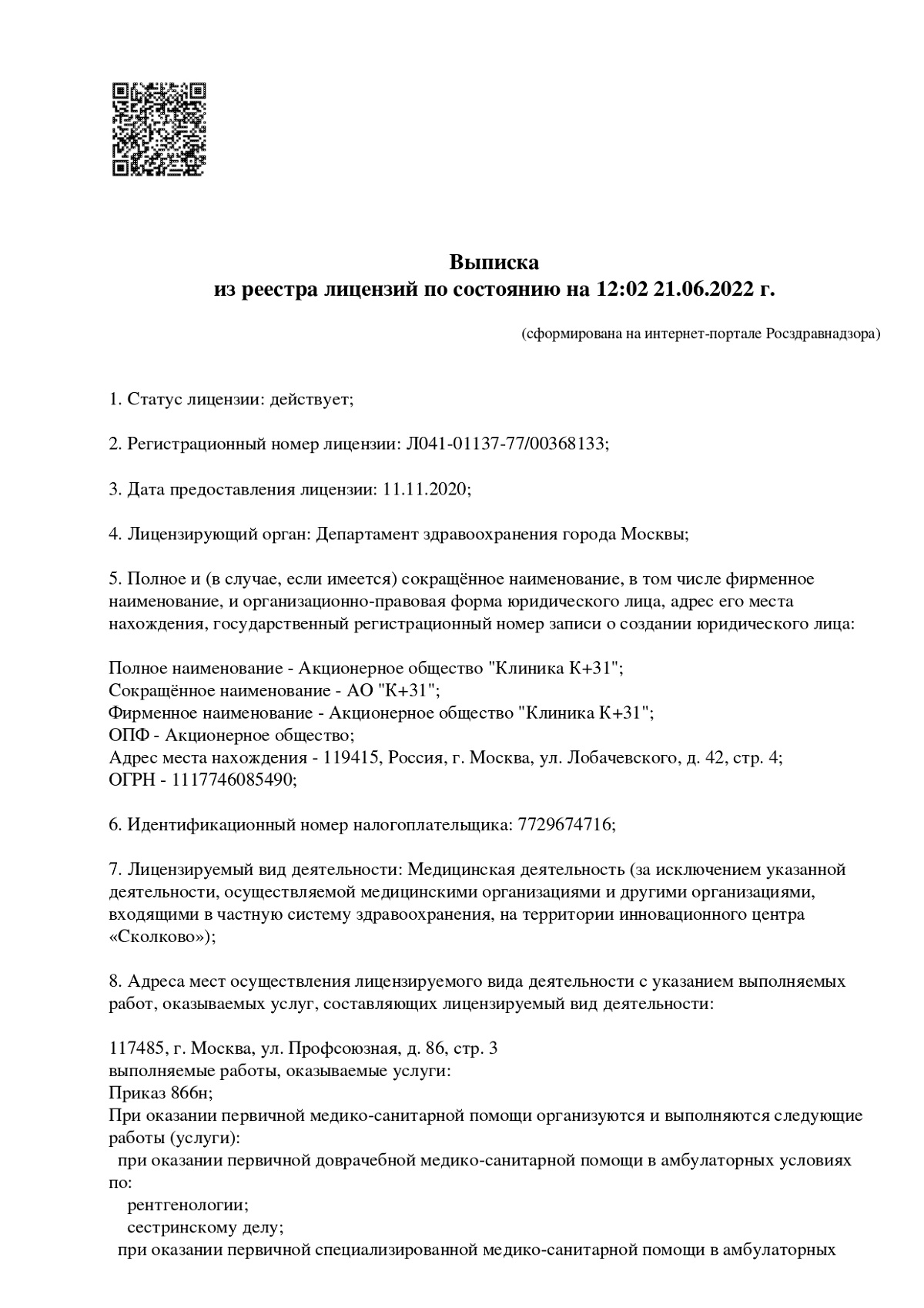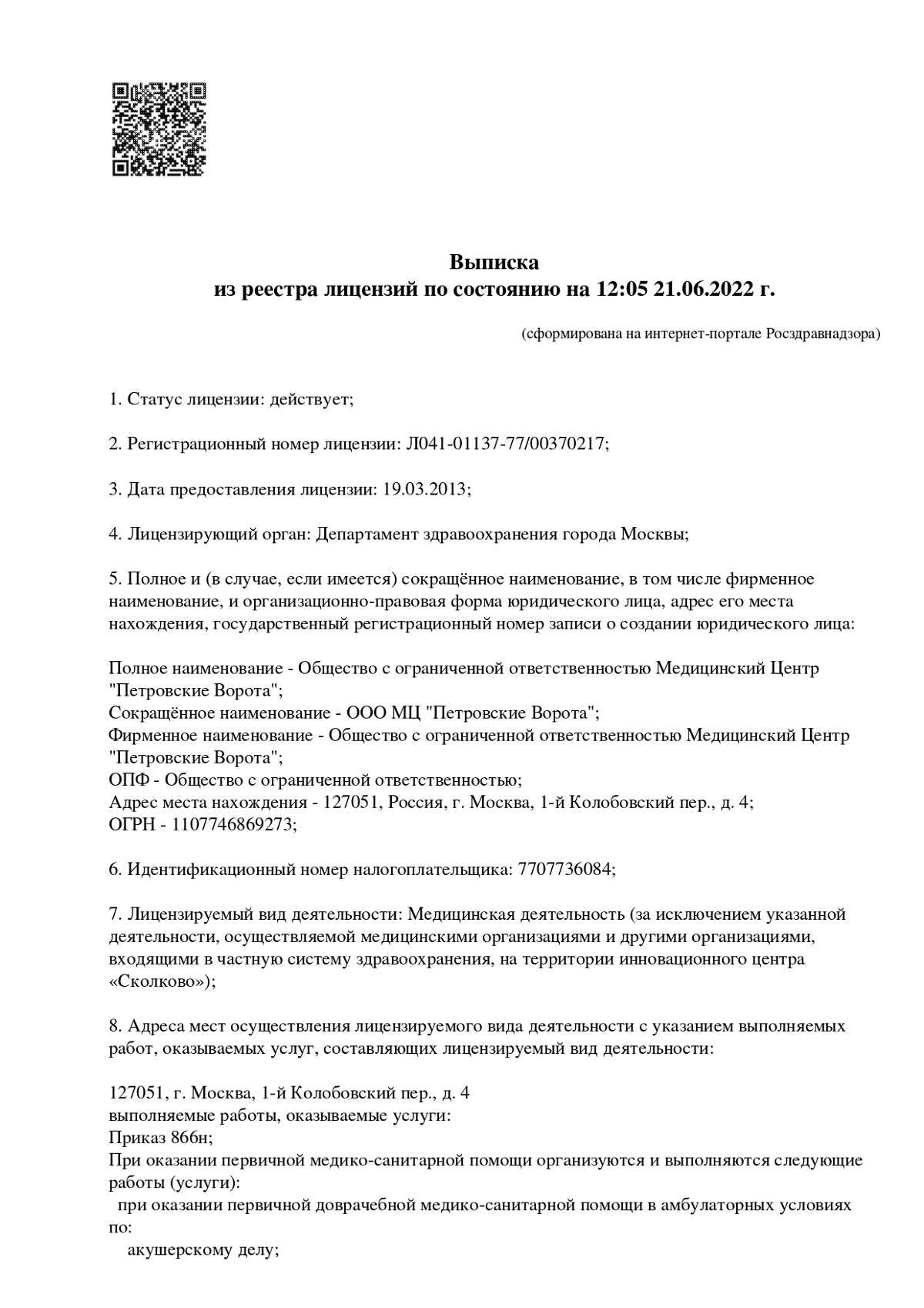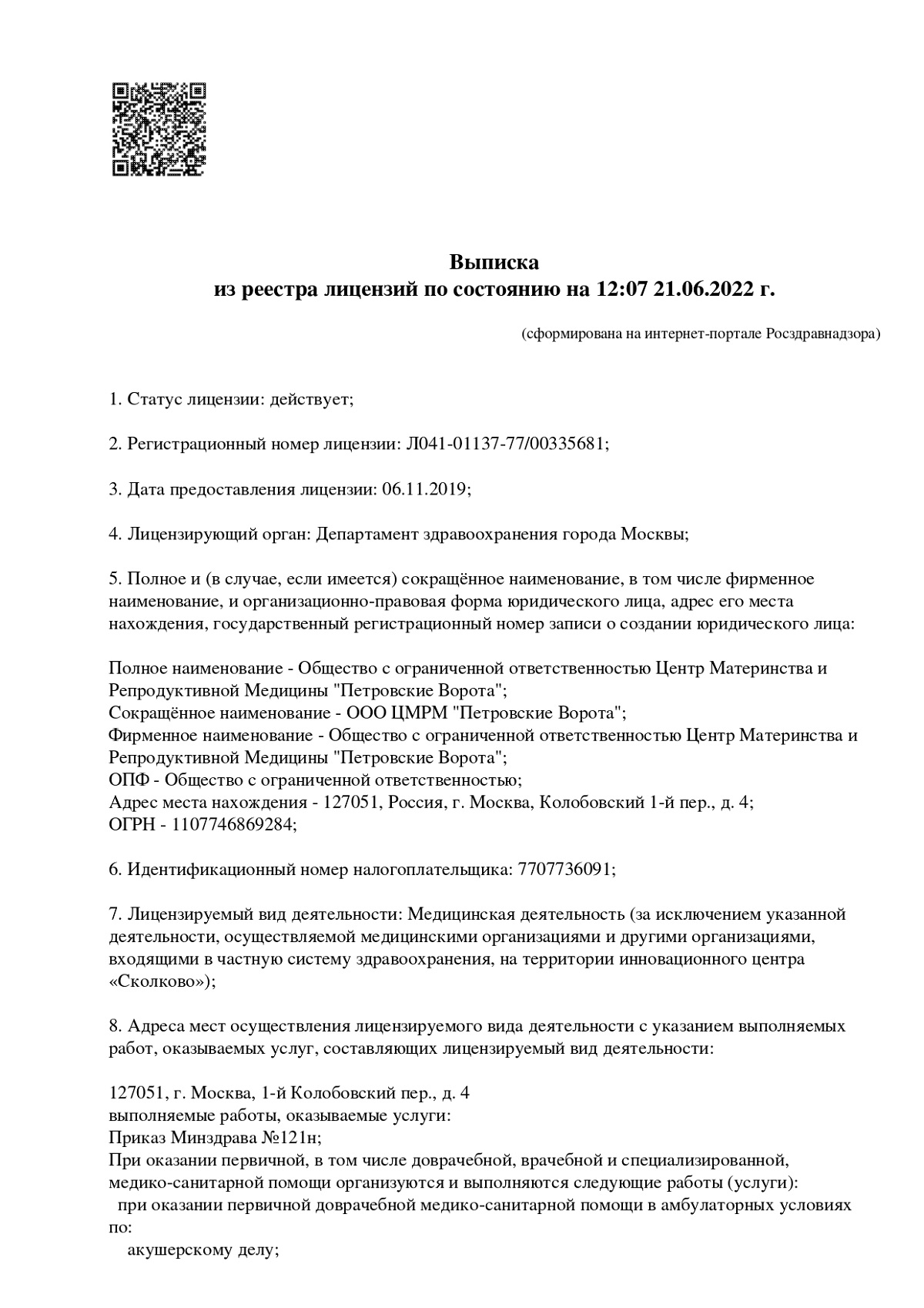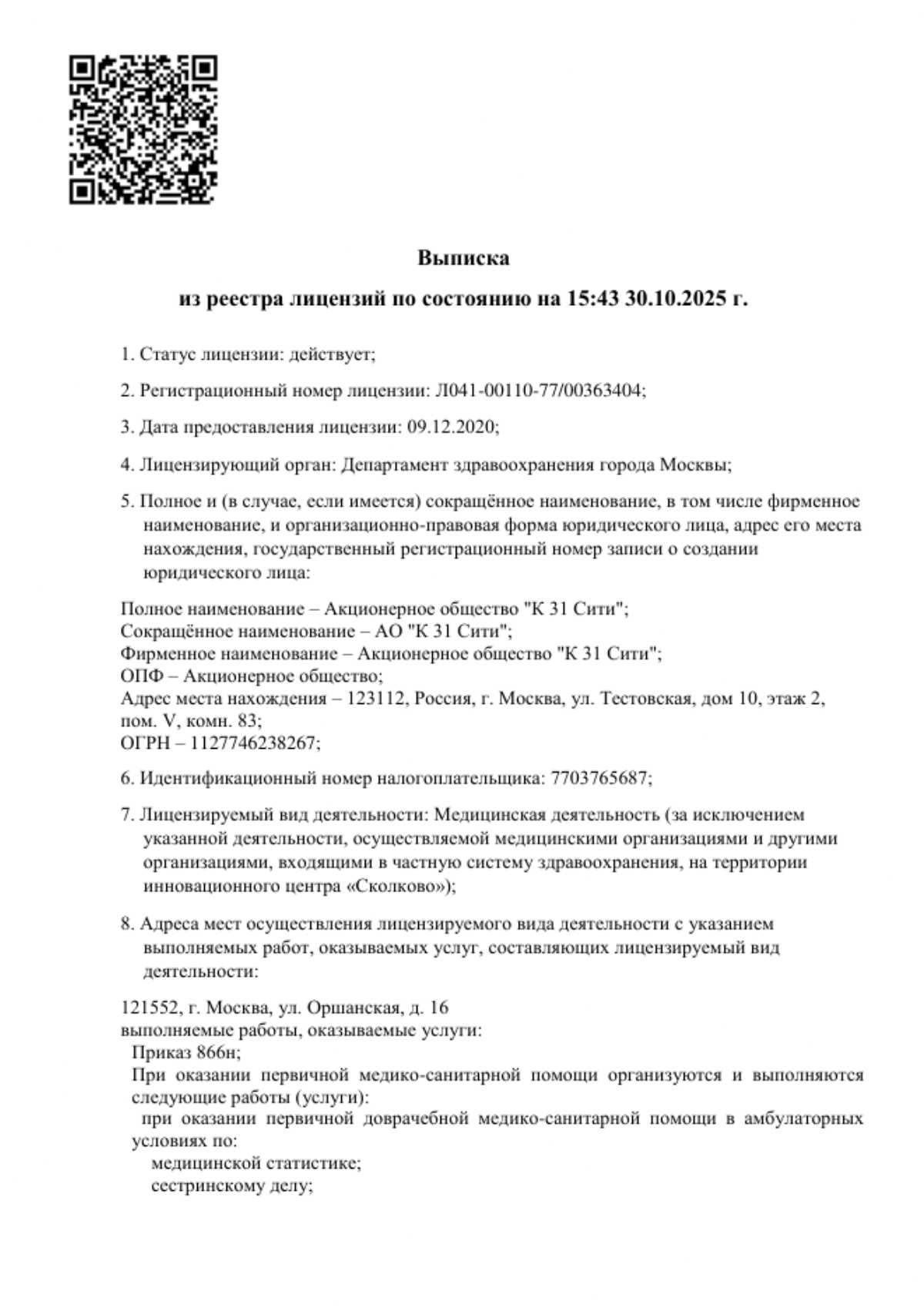Laparoscopic hysterectomy (uterus removal)
Laparoscopic hysterectomy is a modern method of removing the uterus with low trauma and fast recovery. The procedure is performed using a video camera and special instruments that are inserted through small punctures in the abdomen. This avoids large incisions and speeds up recovery after surgery.

specialists

equipment

treatment
Preparing for hysterectomy

Includes a set of diagnostic, therapeutic and organizational measures. Their goal is to identify possible risks, stabilize the body's condition and ensure the safest possible intervention.
At the preparation stage, the patient is prescribed a number of mandatory tests:
- General and biochemical blood tests
- Urine test
- Coagulogram (assessment of blood clotting)
- Ultrasound of the pelvic organs
- ECG and fluorography
- Smears for microflora and oncocytology (PAP test)
- Determination of blood type and Rh factor
In the presence of concomitant diseases, a consultation with a therapist, cardiologist, endocrinologist and other specialists may be required. In some cases, additional MRI of the pelvis, hysteroscopy or diagnostic laparoscopy are performed. If the patient has abnormalities in the tests or has chronic diseases, their drug correction is carried out before the operation.

General recommendations before hysterectomy:
- 7-10 days before the procedure, you should give up alcohol and reduce smoking
- 2-3 days before the procedure, it is recommended to switch to a dietary diet, excluding foods that cause increased gas formation (legumes, cabbage, carbonated drinks)
- A light dinner is allowed the day before the operation, a cleansing enema or laxatives are recommended on the doctor's recommendation
- On the day of the operation, you must not eat or drink (strictly adhere to the fasting regimen), it is advisable to take a hygienic shower, do not apply creams, deodorants and makeup
Proper preparation reduces the risk of complications, facilitates the course of anesthesia and promotes rapid recovery after hysterectomy.
Types of Hysterectomy
Laparoscopic hysterectomy
A minimally invasive method of removing the uterus, performed through small punctures (5-10 mm in diameter) in the anterior abdominal wall. The doctor inserts a laparoscope (an optical device with a video camera), which makes it possible to see the internal organs on the screen in an enlarged form, as well as to control the manipulations using surgical instruments.
Advantages of the laparoscopic method:
- Minimal tissue trauma due to the absence of a large incision
- Low risk of blood loss and infectious complications
- Short hospitalization period (in most cases 1-3 days)
- Fast postoperative period - return to active life is possible after 2-3 weeks
- Good cosmetic result - small punctures heal quickly and do not leave noticeable marks on the skin
Laparoscopic hysterectomy is considered the "gold standard" for planned removal of the uterus, especially in women of working age. The minimally invasive nature of the operation allows you to reduce the load on the body, reduces the risk of adhesions and postoperative hernias, reduces the psychological stress associated with hospitalization and recovery. Patients tolerate the procedure more easily, return to work and their usual rhythm of life more quickly, without experiencing significant discomfort.
Laparotomic hysterectomy
The operation is performed through an incision in the lower abdomen - usually horizontal (along the bikini line), less often vertical (in case of oncology or a very large uterus). This is a classic method used in complex clinical situations (large myomatous nodes, severe adhesions, suspected oncology, the need for simultaneous removal of appendages, lymph nodes and surrounding tissues).
Disadvantages of laparotomic hysterectomy:
- More severe tissue trauma. Unlike laparoscopy, laparotomy involves an incision in the abdominal wall, which leads to greater damage to muscles and fascia
- High risk of postoperative pain. Due to the large-scale intervention, patients often experience discomfort in the early postoperative period, which requires the use of analgesics
- Long recovery period. After laparotomy, restrictions on physical activity remain for up to 6 weeks.
- Increased risk of complications. The main ones are wound infection, suture suppuration, hematoma formation, intestinal paresis, and development of postoperative hernia
- Pronounced cosmetic defect. Even with a horizontal incision in the bikini area, a noticeable scar may remain, especially if the skin is prone to rough scarring
- Longer hospitalization. Usually, patients are hospitalized for 5 to 7 days (sometimes longer, depending on the condition)
Despite all the shortcomings, laparotomic hysterectomy remains an indispensable method in gynecologic oncology and in emergency conditions when wide access and control over the pelvic organs is required. The choice of intervention method is always individual, the attending physician selects it taking into account the clinical situation and the patient's safety.
Cost of the operation
In the medical center "K+31" in Moscow, the operation is performed according to modern standards using minimally invasive technologies and under the supervision of experienced gynecologists. The clinic has modern equipment, individual rooms and a high level of medical safety.
The cost of laparoscopic hysterectomy depends on a number of factors:
- The scope of the intervention (removal of only the uterus or with appendages)
- The presence of concomitant diseases
- The need for additional diagnostics or treatment
The current price for the operation can be clarified during an in-person consultation at the clinic. The doctor will select an effective treatment strategy and offer optimal conditions, including cost.


This award is given to clinics with the highest ratings according to user ratings, a large number of requests from this site, and in the absence of critical violations.

This award is given to clinics with the highest ratings according to user ratings. It means that the place is known, loved, and definitely worth visiting.

The ProDoctors portal collected 500 thousand reviews, compiled a rating of doctors based on them and awarded the best. We are proud that our doctors are among those awarded.
Make an appointment at a convenient time on the nearest date
Price








































































What is a hysterectomy?
This is the name of a surgical operation for the total removal of the uterus, which leads to the cessation of menstruation and the loss of the ability to bear children. Hysterectomy is performed strictly for medical reasons in the presence of diseases that pose a threat to the health or life of a woman. The operation is not a primary method of treatment; it is resorted to only in cases where conservative therapy has proven ineffective.
Thanks to the development of surgical technologies and the introduction of laparoscopic methods, hysterectomy is performed with minimal trauma, a low risk of complications and a shorter recovery period.